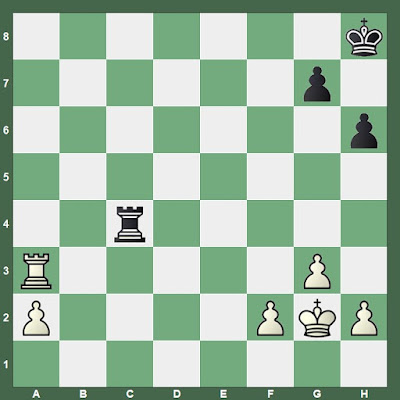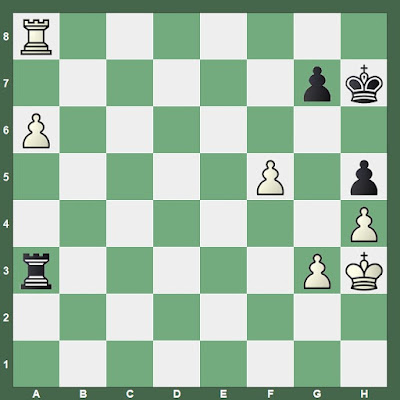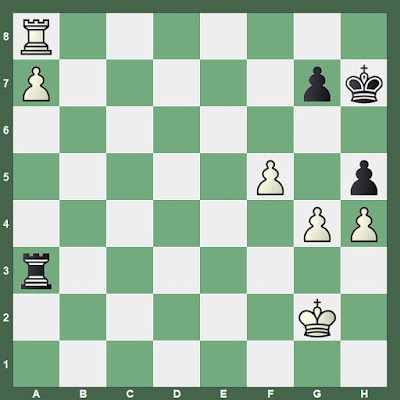
It is much better, in fact, to play an objectively less correct game but to be able to win once you’ve got a winning position.
J.H. Donner, “On the Justice of Chess” (1950), rpt. The King: Chess Pieces (2006), 19.
52.Kg2 Ra2+ 53.Kf1 Kg6 54.Ke1+-
52…Ra2 53.Ra7 Kh6??
Black also seems to be confused about the demands of the position.
53…Kg6 was necessary.
54.f5+- Ra3 55.Ra8 Kh7 56.Ra7 Kh6 57.Ra8 Kh7
58.a7??=
This move clarifies matters for Black. Moreover, the correct plan mentioned above is no longer an option. White’s only hope is that Black will err.
58…Ra2 59.g4 Ra3+ 60.Kg2
60…hxg4??
60…Ra2+ holds. White’s king cannot both find refuge from checks and prevent Black from getting a passed pawn that becomes a queening threat. But, Black’s haste to get a passed pawn here was a critical error.
To Black’s credit, he now knew that his position was lost and what White should do to win. After nine more moves, the critical moment arrived.
70.f6??=
70.h6 would win. The f-pawn will deflect either the rook from it’s critical spot behind the pawn, or the king from security against a skewer.




